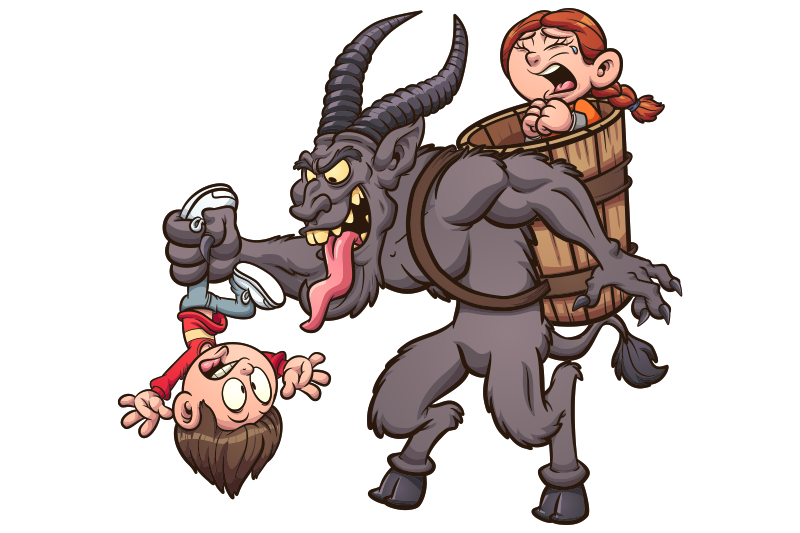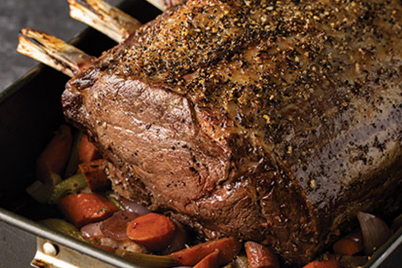There are many versions of Santa Claus worldwide, such as in Germany when St. Nicholas and Krampus, a semi-demon, come on Dec. 5. While St. Nicholas gives good kids gifts, Krampus punishes bad kids by beating them with sticks, eating them, or dragging them to hell. As kids wake up on Dec. 6, they celebrate over their gifts or take care of their injuries.
As every American teen knows, Santa Claus is a huge part of American culture whether they celebrate Christmas or not. The legend of a man with a round belly and a long white beard, wearing a red and white suit, who goes around the world in one night, delivering presents to the good and coal to the naughty — bringing joy to those who cannot afford gifts and making kids around the world happy.
This is the American version of Santa Claus, and while it may seem like every country and culture follows this same story, not everyone does. Many countries have their own version of Santa Claus:
In Germany
Krampus is Germany’s version of the legend of Santa Claus and is scary compared to the American version. Anyway, Krampus is a legend about a semi-demon, semi-goat who works with St. Nicholas. The word Krampus comes from the word Krampen meaning the claw. St. Nicholas and Krampus come on Dec. 5. St. Nicholas gives good kids gifts, while Krampus punishes bad kids by beating them with sticks, eating them, or dragging them to hell. As kids wake up on Dec. 6, they celebrate over their gifts or take care of their injuries.
In Central Europe
Mikulás is a Hungarian legend relating to St. Nicholas. On Dec. 5, Mikulás awards the good children with candy and gifts, while his assistant Krampusz gives bad kids raw potatoes, wooden spoons, or coal. Another Christmas legend in Central Europe is Christkind, a blonde-haired child with angelic wings giving children gifts.
In the Netherlands
Sinterklass, based on St. Nicholas, brought presents to the poor in a red outfit, white beard, and on a horse named Amerigo. He rewards good children and brings hope to every kid.
In Finland
Joulupukki, celebrated in Norway and originating in Scandinavia, is a legend about an old man with a long white beard that dresses up in red leather pants and a red coat traveling all over the world, delivering presents to kids in a sleigh pulled by reindeers. Christians tweaked a couple of details and added St. Nicholas to make their own type of holiday that would still follow their religious beliefs. That is why they seem so similar.
In Italy
Befana is Santa Claus’ equivalent, but a woman. She delivers presents and candy by going into people’s homes by the chimney and leaving bad kids with soot or coal. She is also known as the Christmas Witch.
In Russia
Ded Moroz is another Christmas legend about a man with a long white beard in a fur coat and fur hat and gives kids presents on New Year’s Eve with his granddaughter.
In Iceland
Yule Lads or sons of trolls would leave their mountain homes to scare children who misbehaved and have their Yule cat eat kids who didn’t get new clothes for Christmas. Nowadays this holiday is known as 13 men going around the world offering presents to good kids.
In the Basque region
Olentzero is a creature that gives kids gifts on Dec. 24.
In Iran
Amu Norwuz is a silver-haired, white-bearded man who visits children’s homes delivering gifts to good kids, with his partner Haji Firuz, who demands gifts from bad kids.
In Northern Europe
Nissen, like Olentzero, is a mythical creature delivering gifts to doorsteps during the winter solstice. Nissen is a dwarf resembling a garden gnome.
From a teen’s perspective, learning about all the diverse types of Santa Claus people celebrate is a fun way to learn more about how other cultures differ and are alike. Based on my research, we all enjoy celebrating during this time of year. Regardless of the differences in his appearance and differences in each tradition, Santa rewards good behavior within each country.
Happy Holidays! Merry Christmas! Feliz Navidad! Joyeux Noel! Buon Natale!

Dacia Jackson
Dacia Jackson is a teen journalist, author, and artist with aspirations of becoming an attorney. She is currently pursuing an interest in journalism while attending a Florida online school. Dacia is honest, ambitious, and tenacious, so her column will always be truthful, extraordinarily unique, and hopefully impactful.












